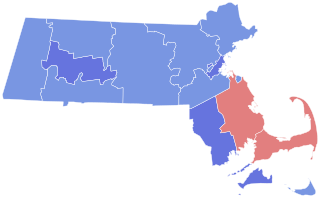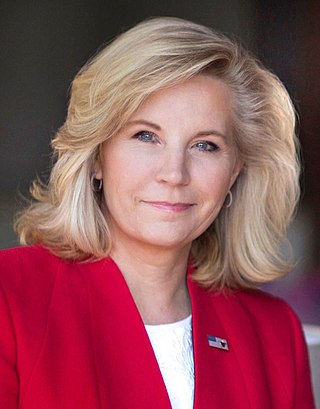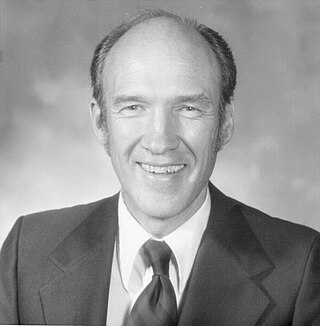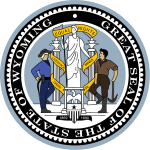
The 1996 United States Senate elections were held on November 5, with the 33 seats of Class 2 contested in regular elections. Special elections were also held to fill vacancies. They coincided with the presidential election of the same year, in which Democrat Bill Clinton was re-elected president.

The 1988 United States Senate elections were elections for the United States Senate. Held on November 8, the 33 seats of Class 1 were contested in regular elections. In spite of the Republican victory by George H. W. Bush in the presidential election, the Democrats gained a net of one seat in the Senate. Seven seats changed parties, with four incumbents being defeated. The Democratic majority in the Senate increased by one to 55–to–45.

The 1986 United States Senate elections were elections for the United States Senate. Held on November 4, in the middle of Ronald Reagan's second presidential term, the 34 seats of Class 3 were contested in regular elections. The Republicans had to defend an unusually large number of freshman Senate incumbents who had been elected on President Ronald Reagan's coattails in 1980. Democrats won a net of eight seats, defeating seven freshman incumbents, picking up two Republican-held open seats, and regaining control of the Senate for the first time since January 1981. This remains the most recent midterm election cycle in which the sitting president's party suffered net losses while still flipping a Senate seat.

The 1984 United States Senate elections were held on November 6, with the 33 seats of Class 2 contested in regular elections. They coincided with the landslide re-election of President Ronald Reagan in the presidential election. In spite of the lopsided presidential race, Reagan's Republican Party suffered a net loss of two Senate seats to the Democrats, although it retained control of the Senate with a reduced 53–47 majority. Democrats defeated incumbents in Illinois and Iowa, and won an open seat in Tennessee, while Republicans defeated an incumbent in Kentucky.

The 1980 United States Senate elections were held on November 4, coinciding with Ronald Reagan's victory in the presidential election. The 34 Senate seats of Class 3 were contested in regular elections. Reagan's large margin of victory over incumbent Jimmy Carter gave a huge boost to Republican Senate candidates, allowing them to flip 12 Democratic seats and win control of the chamber for the first time since the end of the 83rd Congress in January 1955.

The 1976 United States Senate elections was an election for the United States Senate. Held on November 2, the 33 seats of Class 1 were contested in regular elections. They coincided with Democrat Jimmy Carter's presidential election and the United States Bicentennial celebration. Although almost half of the seats decided in this election changed parties, Carter's narrow victory did not provide coattails for the Democratic Party. Each party flipped seven Senate seats, although, one of the seats flipped by Democrats was previously held by a Conservative.

The 1984 United States Senate election in Massachusetts was held on November 6, to elect a member of the U.S. Senate from the State of Massachusetts. The election was won by Democrat John Kerry, the Lieutenant Governor of Massachusetts, who remained Senator until 2013, when he resigned to become United States Secretary of State. One-term incumbent Democratic Senator Paul Tsongas declined to seek re-election after developing cancer.

From February 20 to July 1, 1984, voters of the Republican Party chose its nominee for president in the 1984 United States presidential election. Incumbent President Ronald Reagan was again selected as the nominee through a series of primary elections and caucuses culminating in the 1984 Republican National Convention held from August 20 to August 23, 1984, in Dallas, Texas.

From January 29 to June 4, 1996, voters of the Republican Party chose its nominee for president in the 1996 United States presidential election. Senator Bob Dole of Kansas, the former Senate majority leader, was selected as the nominee through a series of primary elections and caucuses culminating in the 1996 Republican National Convention held from August 12 to 15, 1996, in San Diego, California; Dole resigned from the Senate in June 1996 once he became the presumptive nominee to concentrate on his presidential campaign.

The 1984 United States Senate election in Tennessee took place on November 6, 1984, to select the U.S. Senator from the state of Tennessee. Popular three-term Republican incumbent Howard Baker, who had served as United States Senate Majority Leader since 1981 decided not to seek re-election in order to concentrate on a planned bid for the 1988 Republican presidential nomination. This made the seat open.

The 2008 United States Senate special election in Wyoming took place on November 4, 2008, at the same time as the regular election to the United States Senate in Wyoming. The special election occurred to complete the term of Republican incumbent Craig L. Thomas, who won reelection in 2006, but died in June 2007. Despite being a Democrat, Governor Dave Freudenthal was obliged by state law to appoint a Republican, and selected state senator John Barrasso, who was unopposed in the Republican primary and won the general election to fill the remainder of the term ending January 3, 2013. This is the last time that both of Wyoming‘s U.S. Senate seats were concurrently up for election.

The 1980 United States Senate election in Hawaii took place on November 4, 1980.

The 1984 United States Senate election in Mississippi was held on November 5, 1984. Incumbent Republican U.S. Senator Thad Cochran rode the coattails of President Ronald Reagan, who won 49 states in concurrent presidential election, and won re-election to a second term. Cochran was the first Republican ever to be re-elected to the Senate from Mississippi.

The 1980 United States Senate election in California took place on November 4, 1980. Incumbent Democrat U.S. Senator Alan Cranston easily won re-election to a third term, even as the state's former Republican governor, Ronald Reagan, won a landslide victory in the concurrent presidential election, and a target of the National Conservative Political Action Committee.

The 1984 United States House of Representatives elections in Texas occurred on November 6, 1984, to elect the members of the state of Texas's delegation to the United States House of Representatives. Texas had twenty-seven seats in the House, apportioned according to the 1980 United States census.

The 1980 United States Senate election in Arizona took place on November 4, 1980. Incumbent Republican Senator Barry Goldwater decided to run for reelection to a third consecutive term, after returning to the Senate in 1968 following his failed presidential run in 1964 against Lyndon B. Johnson. Despite Republican presidential nominee Ronald Reagan's landslide win in Arizona, Goldwater defeated Democratic Party nominee Bill Schulz in the general election by a narrow margin, which later caused Goldwater to decide against running for reelection to a fourth consecutive term. Goldwater won only three counties, including Maricopa County.

The 2016 United States House of Representatives election in Wyoming was held on November 8, 2016 to elect the U.S. representative from Wyoming's at-large congressional district, who would represent the state of Wyoming in the 115th United States Congress. The election coincided with the 2016 U.S. presidential election, as well as other elections to the House of Representatives, elections to the United States Senate and various state and local elections. Incumbent Republican Cynthia Lummis decided to retire instead of seeking a fifth term. Liz Cheney was elected to the seat to succeed Lummis.

The 2020 United States Senate election in Wyoming was held on November 3, 2020, to elect a member of the United States Senate to represent the State of Wyoming, concurrently with the 2020 U.S. presidential election, as well as other elections to the United States Senate in other states and elections to the United States House of Representatives and various state and local elections. Cynthia Lummis defeated Democrat Merav Ben-David by more than 46 percentage points, becoming the first female U.S. Senator from Wyoming and succeeding fellow Republican Mike Enzi, who did not run for reelection. This was the first open Senate seat since 1996 where Enzi was first elected. The Democratic and Republican party primary elections were held on August 18, 2020. This was the first time since 1996 that Democrats won any county for this seat. Enzi died aged 77 on July 26, 2021 from injuries in a bicycle accident less than seven months after his retirement from the Senate.

The 1978 United States Senate election in Wyoming was held on November 7, 1978. Incumbent Republican Senator Clifford Hansen declined to seek a third term in office. Former State Representative Alan K. Simpson, the son of former Senator Milward Simpson, won a contested Republican primary and faced Raymond B. Whitaker, the 1960 Democratic nominee for the Senate, in the general election. Despite a favorable environment for Republicans nationwide, Simpson's performance decreased considerably from Hansen's 1972 landslide. Nonetheless, he easily defeated Whitaker, winning 62% of the vote to Whitaker's 38%.

The 1990 United States Senate election in Wyoming was held November 6, 1990. Incumbent Republican U.S. Senator Alan K. Simpson was elected to a third term in office.





















